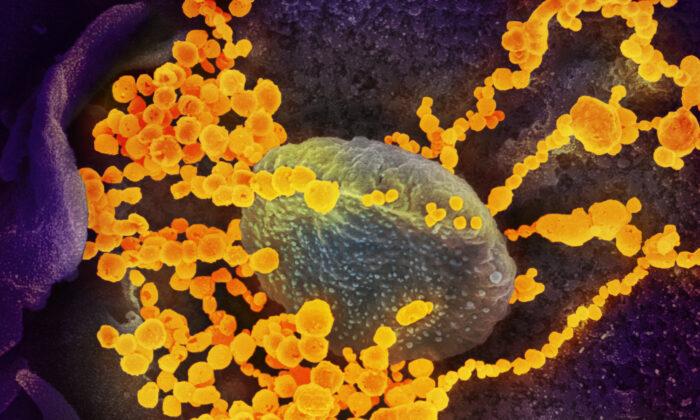Data provided by the U.S. Centers for Disease Control and Prevention (CDC) show there was a 23 percent increase in emergency room visits associated with COVID-19 for the week ending on June 22. There was not a notable change in COVID-19 hospitalizations, numbers show.
Deaths associated with the virus increased by about 14 percent for the same time period, according to the CDC.
In a recent statement posted online, the CDC said that “during April and May 2024, COVID-19 activity was lower than at any time since the start of the pandemic.”
“Recent increases need to be considered from that baseline. This includes increases in COVID-19 test positivity and emergency department visits, suggesting growth in COVID-19 activity across several states, and increases in rates of COVID-19–associated hospitalizations among adults 65+ at some Western sites,” the agency said.
“While there are indications for the potential start of a summer surge, nationally COVID-19 activity remains low,” the CDC continued, adding it will “continue to monitor to see if these recent increases persist.”
As of June 22, the KP.3, LB.1, and KP.2 variants made up the vast majority of COVID-19 cases across the United States, according to the agency.
In a statement issued to The Epoch Times last week, a spokesperson for the CDC said that LB.1, namely, has the ability to infect certain people more easily due to the configuration of its spike protein.
The variant “has the potential to infect some people more easily based on a single deletion in a spike protein,” CDC spokesman David Daigle said in response to a question about the LB.1 variants’ severity.
But he cautioned that “there is currently no evidence that LB.1 causes more severe disease” and that “most key COVID-19 indicators are showing low levels of activity nationally, therefore the total number of infections this lineage may be causing is likely low.”
As for the KP.3 variant, Andy Pekosz, a molecular microbiology professor at Johns Hopkins University, said the newer variant also doesn’t appear to cause more severe symptoms. Antibodies provided through prior infection or vaccines have led to better outcomes in recent months, he said in an interview posted on the university’s website.
In June, an advisory panel for the Food and Drug Administration (FDA) said that vaccine makers should now target any COVID-19 variants that are derived from JN.1. Those vaccines should be rolled out in the fall of 2024, officials said.
Each dose of a new shot could cost up to $130, according to estimates presented during the meeting.







